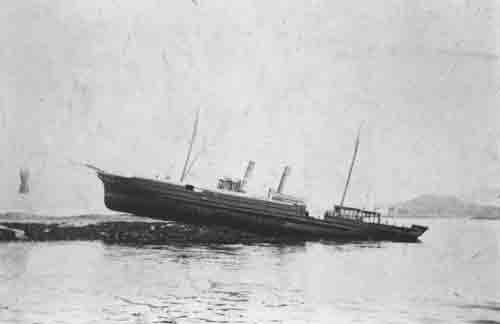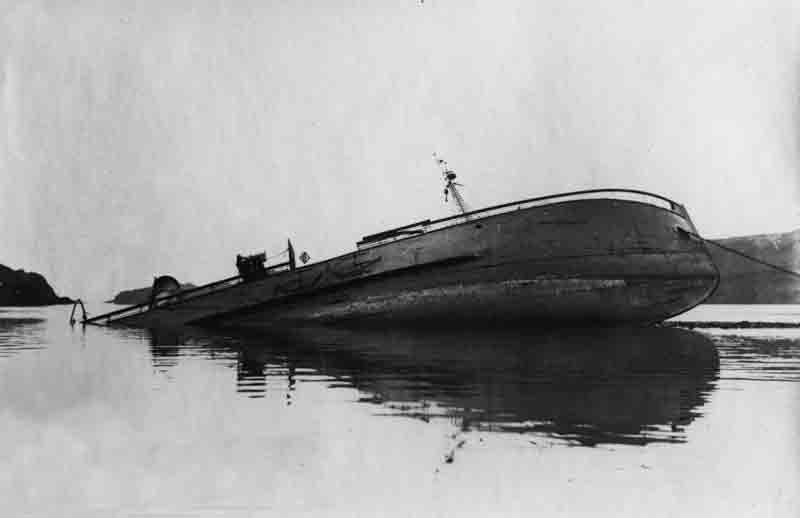Launched in 1921 for Erhardt and Deckers of Rotterdam from the yard of Jonker and Stans, Hendrik-Ido-Imbacht the steamship Katwijk was purchased by R Tornqvist’s Rederi A/B Vulcan of Stockholm in 1952 and re-named Etna. She measured 253.5′ x 38.2′ x 17.0′ and weighed 1589 gross tons, 929 net tons. She was powered by a triple expansion steam engine by Machinefabriek Bolnes delivering 177 net horsepower.
Two years later, on 19th January 1954 Etna was steaming north through the Minch en route from Garston to Denmark with a cargo of coke. On a dark foggy night she ran aground without warning of the rocky outcrop of Sgeir Inoe three mile east of Eilean Glas lighthouse, Scalpay.
Three of the crewmen were slightly injured after the ship hit but otherwise the crew aboard were safe with the ship firmly stuck on the rocks by the bow. Kennedy Garston was injured in the eye as a chain hit him as he launched one the ship’s lifeboats and Second officer Neils Johanssen injured his hand firing a distress flare. An SOS message was sent and picked up by the Stornoway Coastguard at 3am. The coastguard immediately alerted the Stornoway lifeboat, and the William and Harriot was launched at 04.30am and headed to the scene. The lighthouse keeper at Glas Eilean also picked up the message and reported seeing the lights of the ship on the south side of the rock. The Etna had been holed on the starboard side and was taking on water but thankfully remained hard aground until the lifeboat arrived. Despite a heavy swell the lifeboat coxswain Malcolm McDonald skilfully succeeded in bringing the lifeboat alongside and rescuing the twenty five people aboard the ship who were already packed and ready when the lifeboat arrived at the scene. As the crew left their ship they reported that she was sinking deeper beneath the surface and only a part of her stern was visible above water as they pulled away.
Among the crew aboard the Etna were the Chief engineer Olaf Persson and new wife Singe who had been married in the Swedish embassy only a few days earlier on 13th January.
The following day Metal Industries salvage vessels Metinda III and Salveda were dispatched to the scene but when they arrived they reported no sign of the ship which had presumably slipped off the rock and sunk in deep water. The seabed shelves steeply to the south of Sgeir Inoe and falls to depths of around 100 metres close to the shore. In 1981 divers reported finding anchors and chains, probably from the Etna, on the site but no other wreckage confirming the supposition that the ship had slipped off the rock into the depths.































